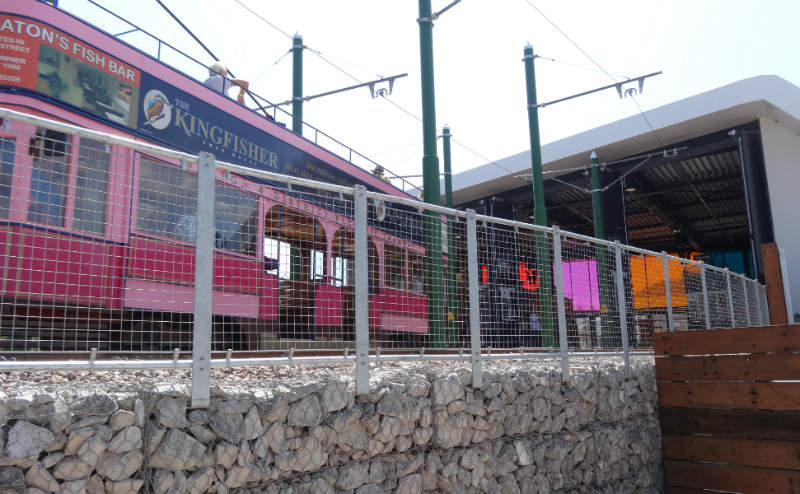
The Devon tourist attraction showcasing the history of trams uses a Terramesh embankment wall in adding a new station and amenities, better serving visitors year-round.
The Seaton Tramway attraction comprises a three-mile track loop served by a broad range of electric tram vehicles, a depot showcasing behind-the-scenes operations, and exhibitions about tram history.
Part of a regenerated tourist industry in the Axe Valley region of Devon, the tramway is adding a state-of-the-art station building to increase the range of programming available to its over 100,000 visitors each year. The first new station built by a heritage railway in decades, the £2m project is the most substantial engineering works to take place since the attraction opened in 1970.
The Seaton Tramway grew out of the Lancaster Electric Company and the owner, Claude Lane’s, passion for electric vehicles. Starting in the 1940s he developed electric tram installations that operated as summer attractions in various seaside towns. He expanded his fleet and changed location several times, before the tramway came to its permanent location in Seaton, Devon, in 1970. Since then, the tramway has expanded its scope, length of track, and the number of vehicles it operates. Since Mr Lane’s death in 1971 the attraction has been operated by a combination of staff and volunteers.
In recent years this area of Devon has undergone an economic resurgence, with a wide range of attractions drawing visitors from across the UK and further afield. This demand provided an opportunity for Seaton Tramway to look to the future in planning an expanded station. The previous reproduction Edwardian station was built in 1996 and is replaced by a contemporary building allowing for the effective showcasing of the tramway’s vehicle collection, as well as the history and story of trams. The station has four platforms, each long enough to accommodate four trams. There are also new interpretative displays, a gift shop, and a café.
The station is raised 2m above ground level and on a very tight site. Operation of the Seaton Tramway continued uninterrupted during construction, further limiting the space available. Seaton Tramway chose to work with Maccaferri because of its experience as both designers and manufacturers offers a range of solutions suitable for these conditions.
This area of Devon has soft soils that require substantial stabilisation and, of course, the tracks are subject to high loads from the trams. Paralink high-strength geogrids were used as basal reinforcement.
The four-platform style of the station requires multiple approaching ramps. Over 400t of ballast and 300 sleepers were used, together with 190 piles. Maccaferri designed a back-to-back embankment formed with 120-year life Terramesh System as the appropriate solution to space constraints. Terramesh is modular and quick to construct while providing soil reinforcement for embankments up to up to 75m tall. Macgrid geogrids are used as ballast stabilisation over the Terramesh embankment once completed.
The Seaton Tramway project adds to Maccaferri’s extensive portfolio of rail solutions in the UK. Other solutions, such as the MacRes and Paraweb products used for the Reading Viaduct, can support fully vertical construction, presenting a concrete faced wall. Having a range of product solutions allows its designers to balance project considerations, load, available land, and cost, to find the best design for its clients.
